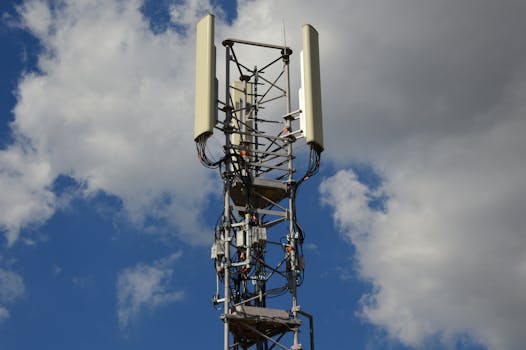
Comparative Analysis of 4G vs 5G Performance Metrics
Comparative Analysis of 4G vs 5G Performance Metrics is a crucial aspect of understanding the significant advancements in wireless network technology. The fifth generation of wireless network technology, or 5G, has been making waves in the tech industry with its promise of faster speeds, lower latency, and greater connectivity. But how does it compare to its predecessor, 4G? In this article, we will explore the key differences between 4G and 5G, and examine the performance metrics that set them apart.
The main difference between 4G and 5G lies in their underlying architecture and design principles. 4G, which was first introduced in the late 2000s, was designed to provide high-speed internet access to mobile devices. It uses a traditional cellular network architecture, with a focus on providing wide-area coverage and supporting a large number of users. 5G, on the other hand, was designed from the ground up to support a wide range of use cases, including enhanced mobile broadband, ultra-reliable low-latency communications, and massive machine-type communications.
Performance Metrics: 4G vs 5G
So, how do 4G and 5G compare in terms of performance metrics? Let’s take a look at some of the key differences:
Speed is one of the most significant differences between 4G and 5G. 4G typically offers download speeds of up to 100 Mbps, while 5G can reach speeds of up to 20 Gbps. This is because 5G uses a new radio frequency band, known as millimeter wave, which has a much higher frequency range than the bands used by 4G. This allows for faster data transfer rates and lower latency.
Latency is another area where 5G outperforms 4G. 4G has a latency of around 50-70 ms, while 5G can achieve latency as low as 1 ms. This is because 5G uses a new network architecture that is designed to reduce latency and improve responsiveness. This makes 5G ideal for applications that require real-time communication, such as online gaming and virtual reality.
Network Architecture and Design
The network architecture and design of 4G and 5G are also significantly different. 4G uses a traditional cellular network architecture, with a focus on providing wide-area coverage and supporting a large number of users. 5G, on the other hand, uses a more flexible and scalable architecture, known as network slicing, which allows for the creation of multiple independent networks within a single physical infrastructure. This allows for greater flexibility and customization, and enables 5G to support a wide range of use cases and applications.
In addition to its new radio frequency band and network architecture, 5G also introduces a number of new technologies and features, such as beamforming, massive MIMO, and edge computing. These technologies and features enable 5G to provide faster speeds, lower latency, and greater connectivity than 4G, and make it an attractive option for a wide range of applications and use cases.
Conclusion
In conclusion, the comparative analysis of 4G vs 5G performance metrics reveals significant differences between the two wireless network technologies. 5G offers faster speeds, lower latency, and greater connectivity than 4G, making it an attractive option for a wide range of applications and use cases. Whether you’re a mobile network operator, a business, or an individual, understanding the differences between 4G and 5G is crucial for making informed decisions about your wireless network needs. As 5G continues to roll out and evolve, it will be exciting to see the new use cases and applications that emerge, and the impact that it will have on our daily lives.




